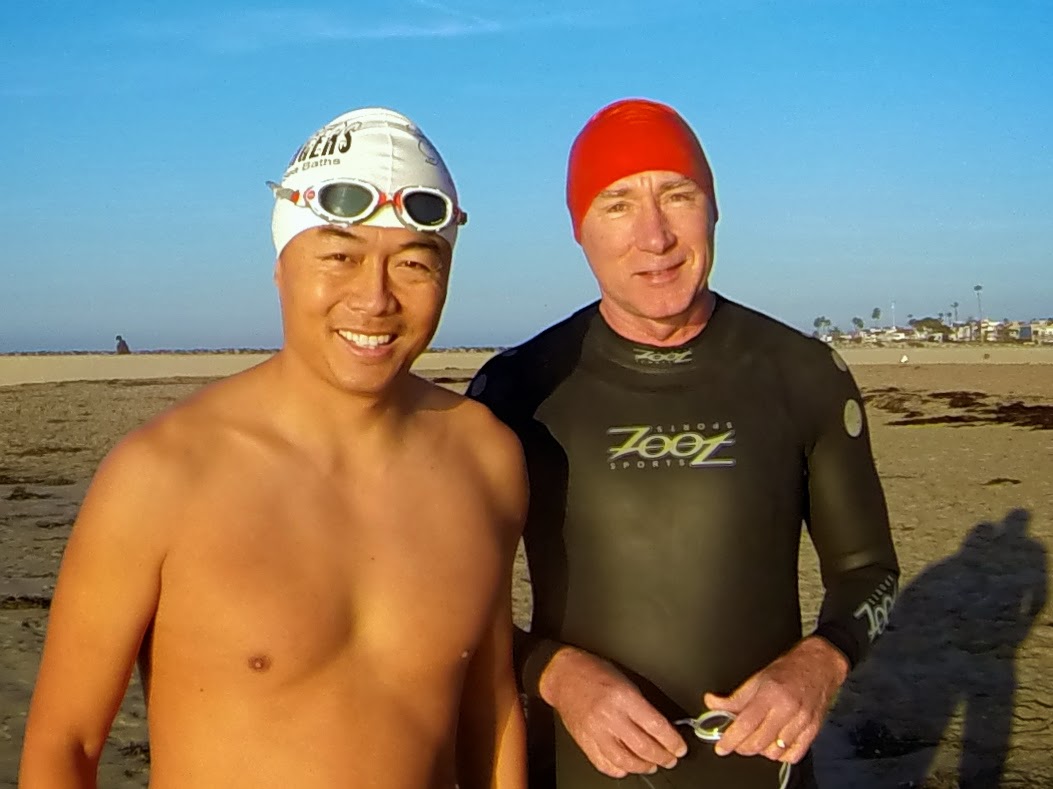This weekend I went to New York and on Saturday I participated in the Little Red Lighthouse Swim put on by NYCSwim. A few years back when I lived in New York, I participated in some other races organized by NYCSwim, including the Statue of Liberty Swim and the Great Hudson Swim. I wanted to do the Little Red Lighthouse Swim back then, but I was training mainly at an indoor pool and was not the open water swimmer that I am today.
I was nervous before the start of this race. It was originally supposed to be about 6.2 miles (10 kilometers), but Hurricane Sandy washed out the old starting pier. Apparently the damaged pier was supposed to be repaired this summer, but now it will not be completed until this winter. I did not find this out until the day before the race when I checked the race website and noticed that the swim was now listed at "approximately" 7.5 miles.
The extra distance added a bit to my anxious feeling, but I did not think it would be a problem. Then, I arrived to check in and the race people told me my time would be unofficial because I intended to swim in jammers. I missed the rule on the website stating that only the small, traditional Speedo-type swimsuit was allowed. They told me I could still swim, but that I would be in the wetsuit category. This seemed crazy to me, but what I could I do? I did not like that my time would be unofficial one bit, so I jumped in a cab and went 30 blocks to a sporting good store on the Upper West Side. I ran in, bought an old-school Speedo, ran back out, jumped in another cab, and raced back to the start.
I was sweating and had just a few minutes to change suits, smear sunscreen all over my body, and apply Vaseline to my armpits. It was hectic and crazy, but the race organizers changed me out of the unofficial wetsuit division and back into the official time race. It would not have mattered to anybody else since I never would have won an award, but it meant something to me.
Shortly after 3:00 I threw my stuff in a bag and placed it in the designated grassy area for transport to the finish, I lined up and jumped in the water. The water felt chilly at first, but it was mainly because I was sweaty and burning up from all my running around. I think the water was about 68.5 or 69 degrees. Once I started, I never felt chilled swimming or even after I got out. The race instructions were to round the first dock and turn north, taking aim at the right stanchion (new vocabulary word) of the George Washington Bridge, better known as the GW Bridge.
With my goggled eyeballs just a few inches off the water, the bridge looked like it was 900 miles away when I first turned the corner to the north and tried to sight. The stanchion is very tall and I could see it when sighting almost every time. It was only when there were waves and chop that I could not see it. The race supposedly had buoys every half mile. We were instructed to pass within 5-10 yards of each buoy or we would be disqualified. There were swells, currents, and some wind chop though, so seeing the buoys was difficult. There were chunks of time where I saw no buoys or other swimmers. Then, out of the blue, even shortly after sighting and seeing nobody, I would run into another swimmer's leg. It was wild.
One of the most interesting things about the swim was the way the water changed. It was murky the whole time, but in the beginning it was nearly as salty as the ocean. By the end, however, it tasted like fresh water with just a very little bit of salt.
All told, I clocked it at 8.12 miles. Other swimmers with GPS told me at the finish that they measured it anywhere from 8.03 to 8.33 miles. My very official time was 2:57:25. There was a slight negative current at the beginning, but it quickly shifted and built positively as the race went on. This is clearly visible in my splits. I think Mile 8 was a little bit slower because I rounded the Little Red Lighthouse point and curved towards land, where the upstream current was a little blocked. That, or my arms were giving out.
It was something else to swim under that great big bridge and make my way by the Little Red Lighthouse. This landmark sits at the base of the bridge and was once going to be torn down. Only after the community of residents who raised their children reading the picture book, The Little Red Lighthouse and the Great Gray Bridge organized to save it was it converted to a historical building.
Another adventure for the record book (website?) and definitely a confidence builder for me. I was on a high wandering around NYC after the swim. The next day I marched it the People's Climate March with 400,000 other people. That was just as amazing, although my arms were so tired I could not lift a sign over my head for very long.
-Juice

.jpg)
.jpg)









.jpg)

.JPG)
.JPG)




.JPG)
.JPG)
.JPG)


















